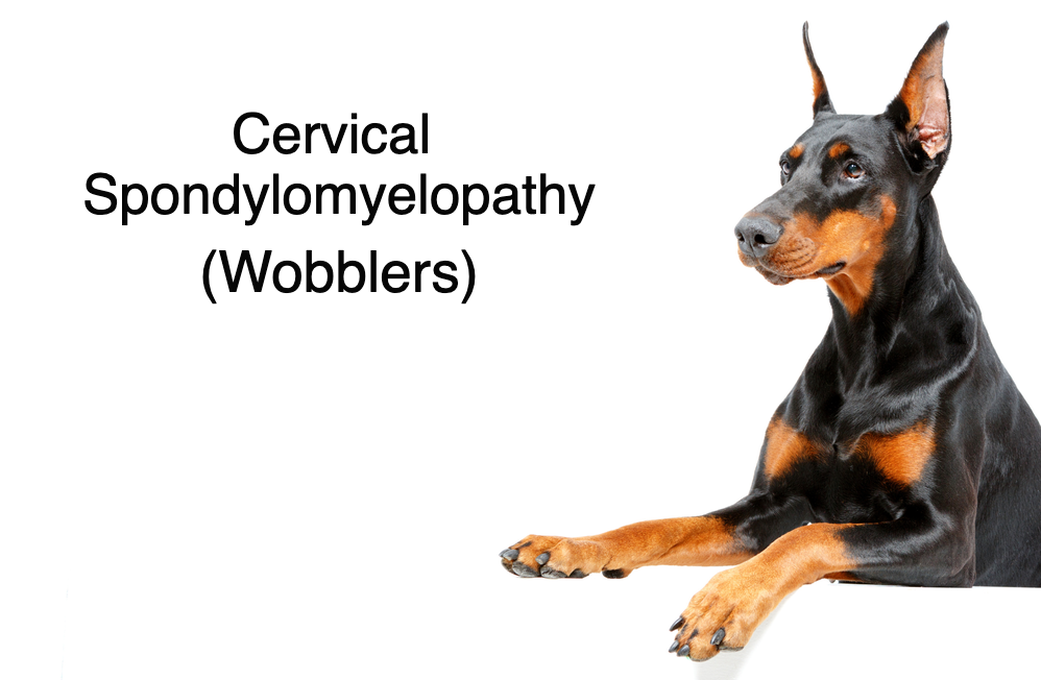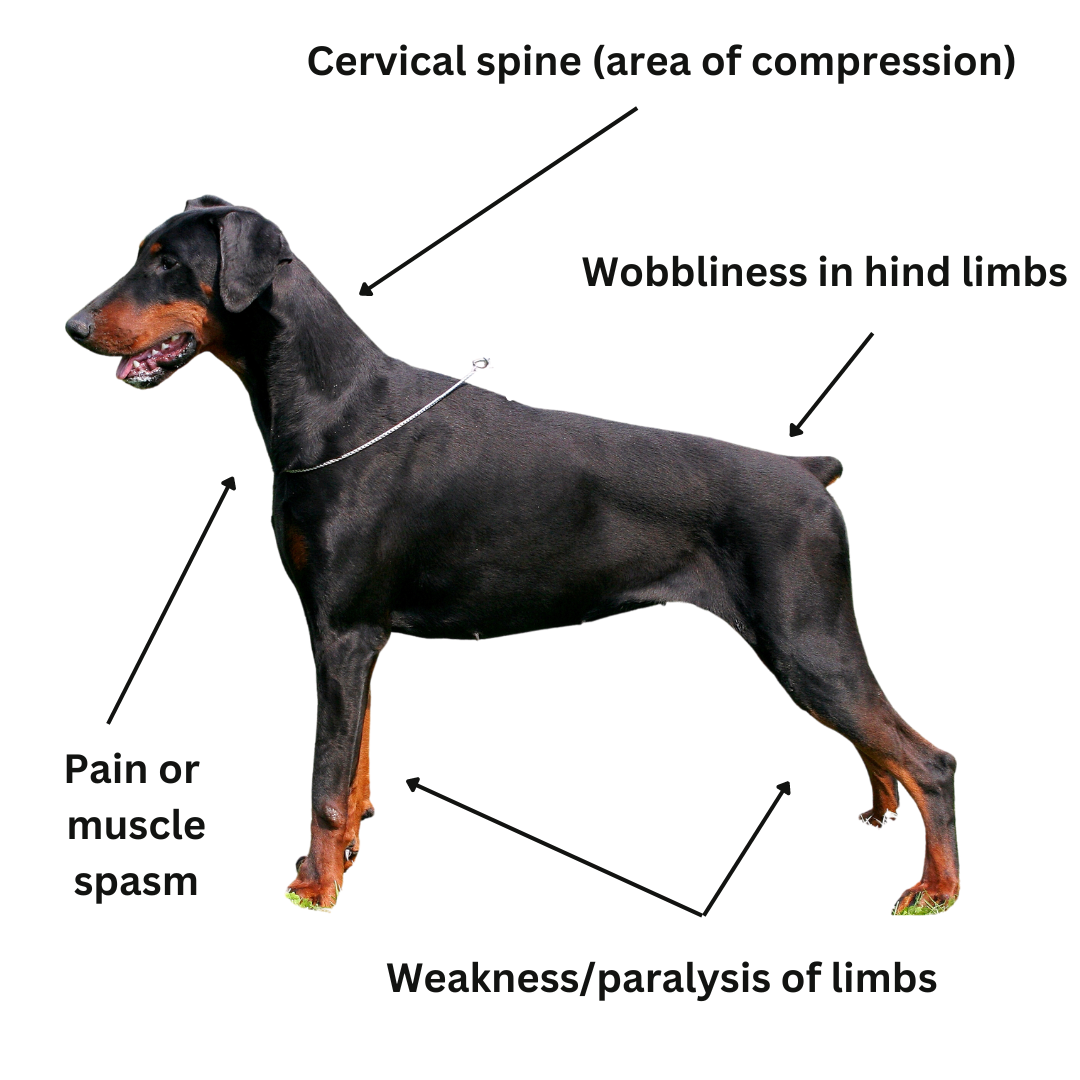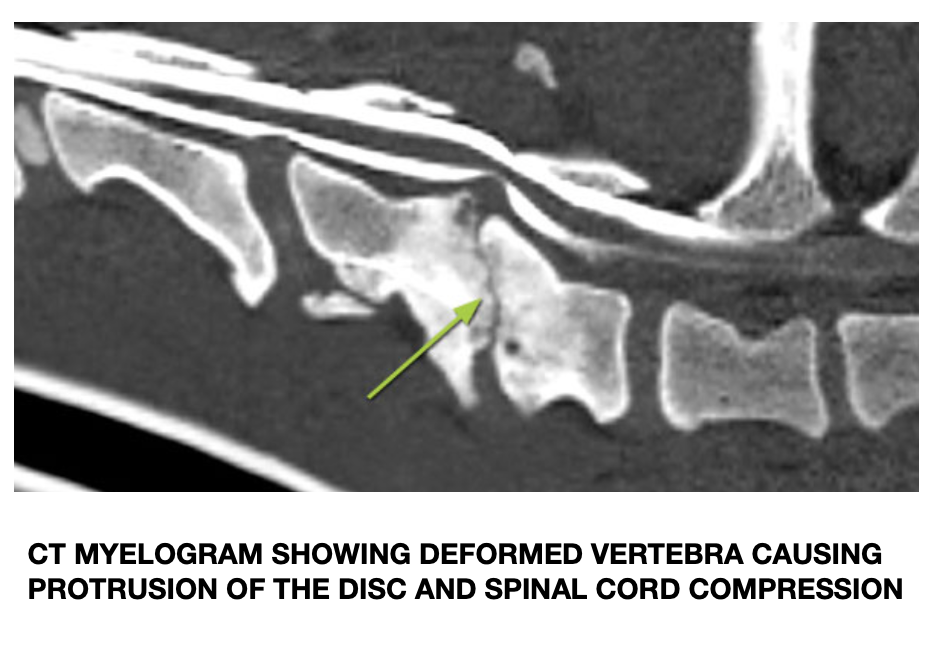What is Cervical Spondylomyelopathy?
Spondylomyelopathy (also called wobblers syndrome) is a disorder which causes compression of the spinal cord in the neck of your dog. It is most commonly found in middle aged Dobermanns and young giant breed dogs where there is abnormal development of the cervical vertebrae.
|
Clinical Signs and Symptoms Signs and symptoms may be acute or they can be slowly progressive. Mild cases can show some subtle 'wobbliness' or incoordination which is usually more pronounced in the hind limbs than the front limbs. Other subtle signs may be a low head carry, changes in gait pattern, particularly at a walk. Neck pain is variable but is more likely in acute cases. More severe signs and symptoms may present with weakness or paralysis of all four limbs. |
|
Non Surgical Treatment: Non surgical treatment for spondylomyelopathy typically involves: - Exercise restriction : to minimise further compression through the compromised spinal segment. This involves on leash walking only and no unsupervised play. -Body harnesses are usually recommended as opposed to collars which can place undue stress on the cervical spine -Physiotherapy : To address pain and inflammation, compensatory strategies and atrophy and build proprioception and balance |
Surgical Treatment: - Surgery is advised for patients who have significant neurological signs and symptoms. The goals of surgery are to decompress the spinal cord compression and to stabilise the vertebral segment. The type of surgical procedure is based on the surgeons preference and the changes found on the diagnostic imaging. Some common surgical techniques are: -Vental Slot Decompression Surgery -Dorsal Laminectomy -Distraction/fusion of the affected vertebrae. Overall it has been found that 70-80% of pateints improve after surgery with an average of 3 months to achieve maximum improvement. |
Physical Rehabilitation post surgery for Cervical Spondylomyelopathy:
Physiotherapy aims to :
-Reduce pain and inflammation post operatively
-Address and reduce associated muscle spasm
-Begin early passive range of motion of limbs
-Begin assisted sling walking and strength training
-As ambulation improves and strength is gained, begin targeted gait retraining, balance and proprioception.
The main aims of physiotherapy and rehabilitation are to get your dog as close to independent function as possible and to maintain quality of life to the best of your dogs ability. Every dogs journey through rehabilitation is different with their own unique set of signs and symptoms. Canine Kinetics prides itself in creating individualised treatment sessions which are uniquely tailored to your dogs needs.
Physiotherapy aims to :
-Reduce pain and inflammation post operatively
-Address and reduce associated muscle spasm
-Begin early passive range of motion of limbs
-Begin assisted sling walking and strength training
-As ambulation improves and strength is gained, begin targeted gait retraining, balance and proprioception.
The main aims of physiotherapy and rehabilitation are to get your dog as close to independent function as possible and to maintain quality of life to the best of your dogs ability. Every dogs journey through rehabilitation is different with their own unique set of signs and symptoms. Canine Kinetics prides itself in creating individualised treatment sessions which are uniquely tailored to your dogs needs.




